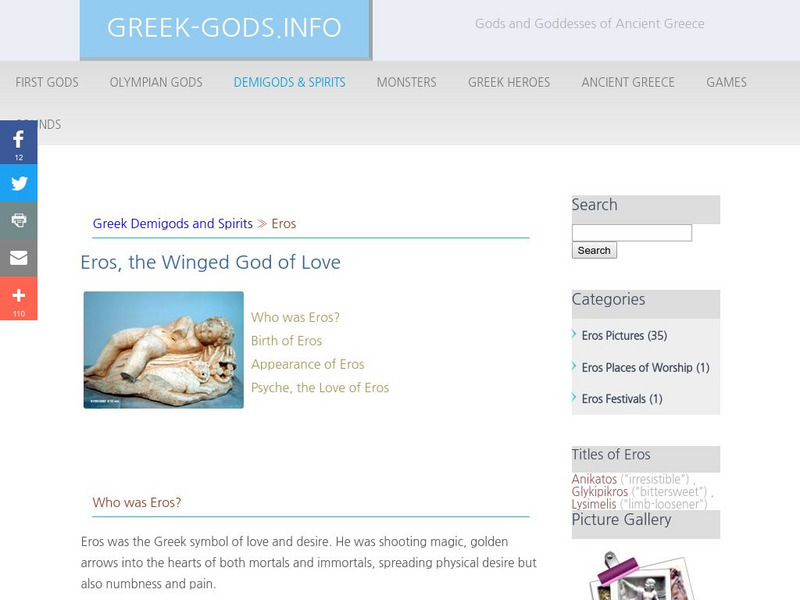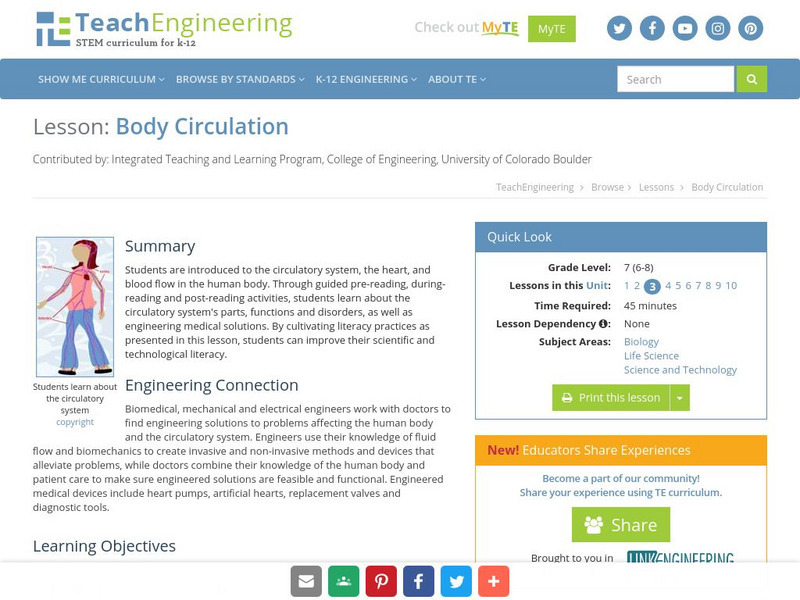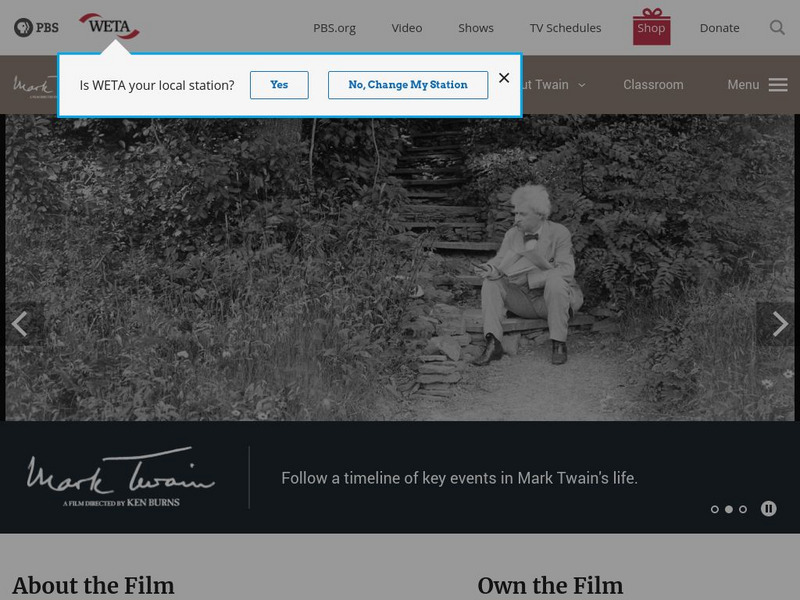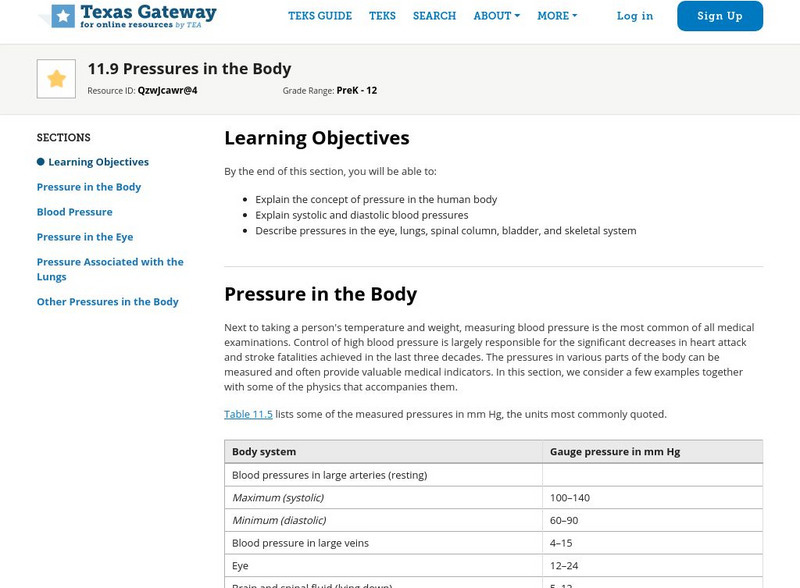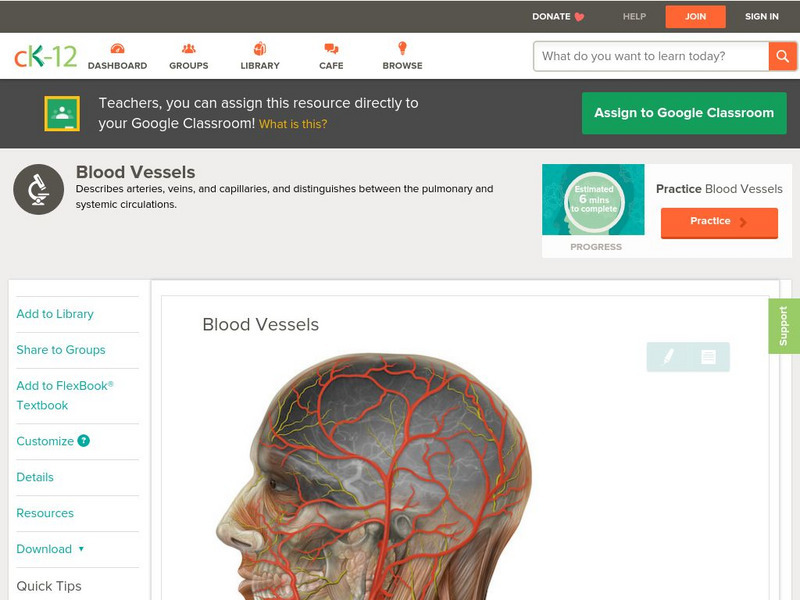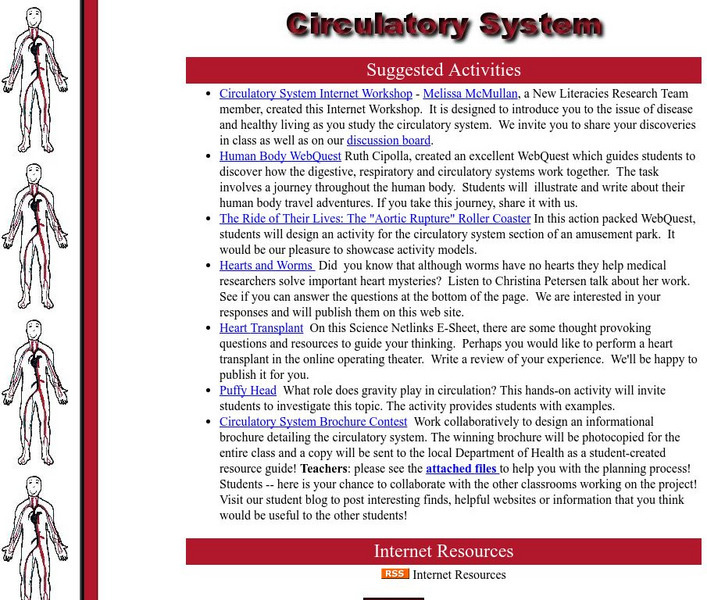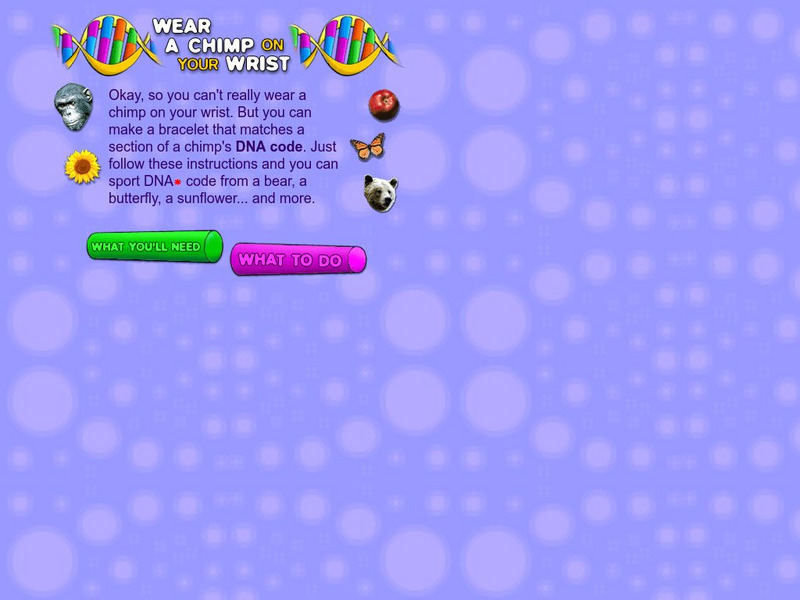Biology Pages
Kimball's Biology Pages: Anatomy of the Human Circulatory System
This site is produced by John W. Kimball, a retired biology teacher who wrote the textbook that these pages came from. The excerpt explains the different parts of the circulation system and how they function. Includes great pictures!
Greek Gods
Greek Gods: Demigods & Spirits: Eros
Eros (Cupid), the winged god of Love in Ancient Greece, shot golden arrows into the hearts of both humans and gods.
TeachEngineering
Teach Engineering: Body Circulation
Learners are introduced to the circulatory system, the heart, and blood flow in the human body. Through guided pre-reading, during-reading and post-reading activities, students learn about the circulatory system's parts, functions and...
PBS
Pbs: The Cloning Process
This slide show provides an illustration of the process of creating embryonic stem cells using a cloned mouse embryo. Scientists generally refer to the technique as "somatic cell nuclear transfer." It is the process at the heart of what...
PBS
Pbs Ken Burns: American Lives: Mark Twain
In his time, Mark Twain was considered the funniest man on earth. Yet he was also an unflinching critic of human nature, using his humor to attack hypocrisy, greed and racism. In this series, Ken Burns has created an illuminating...
TeachEngineering
Teach Engineering: Surgical Device Engineering
This unit focuses on teaching students about the many aspects of biomedical engineering (BME). Students will see that it is a broad field that relies on concepts from each of the other disciplines of engineering. They will also begin to...
Texas Education Agency
Texas Gateway: Fluid Statics: Pressures in the Body
By the end of this section, you will be able to explain the concept of pressure in the human body; explain systolic and diastolic blood pressures; and describe pressures in the eye, lungs, spinal column, bladder, and skeletal system.
US National Archives
Nara: Teaching With Documents: Poster Art From World War Ii
The National Archives and Records Administration (NARA) explores how words and posters waged a constant battle for the hearts and minds of the American citizenry during World War II.
Language Guide
Language Guide: El Cuerpo Ii
A very extensive guide of the internal parts of the body. Here you can practice the correct Spanish (of Spain) pronunciation of the internal parts of the body as you listen to each audio file.
Other
Transplant Q/a
Article with questions and answers relating to heart transplants. Great info from who is eligible, what is an average cost, what drugs are related and much more.
PBS
Pbs: Scientific American Frontiers: Searching for a Substitute
This article on the history and development of the artificial heart examines past attempts at artificial heart transplant and looks at future research and development.
CK-12 Foundation
Ck 12: Life Science: Blood Vessels
[Free Registration/Login may be required to access all resource tools.] The blood vessels are an important part of the cardiovascular system. They connect the heart to every cell in the body. Arteries carry blood away from the heart,...
North Central Regional Educational Laboratory
Kids learn.org: Circulatory System
What do you know about the circulatory system? This site features several links to help you increase your knowledge of this fascinating human body system.
TED Talks
Ted: Ted Ed: Capturing Authentic Narratives
Journalism can be much more than reporting. An authentic, human narrative touches audiences and keeps them reading. Learn how to shape a human-centered news story, and the importance of facts, context, and heart. Free registration is...
CK-12 Foundation
Ck 12: Life Science: 11.21 Cardiovascular System
Understand the structure and function human cardiovascular system.
CK-12 Foundation
Ck 12: Life Science: 11.29 Cardiovascular Diseases
Discover how cardiovascular disease can be dangerous to human health.
American Museum of Natural History
American Museum of Natural History: O Logy: Stuff to Do: Wear a Chimp
Illustrated instructions for a constructing bracelet from a section of the DNA code for a chimp, a sunflower, a grizzly, the human heart, or any one of six other plants or animals.
Other
Dr. Saul: Biology in Motion
This interactive site provides animations and activities in several areas of physiology. The images are simple, but clear. The accompanying text provides a good description of the process being shown.
University of Kansas Medical Center
University of Kansas Medical Center: Basic Histopathology
These microscopic images of different cells and tissues from the human organs gives an idea of some the pathological processes that occur and the importance of histology.
National Academy of Engineering
Health Technologies Timeline
Find a timeline of important medical inventions of the 20th century. Inventions include the first electrocardiograph, the first kidney dialysis machine, the first plastic contact lens, and the first artificial heart.
ClassFlow
Class Flow: People Grow and Change
[Free Registration/Login Required] This is a 2nd grade unit on how the human body changes, as well as lessons on the heart and lungs, bones and muscles, and the digestive system. This unit includes web links to some fun informational...
PBS
Pbs Teachers: Drinking Straw Pulse Measurer
Measure the human pulse by counting the movements of a drinking straw attached with clay to the pulse point on the neck. Predict activities that affect pulse rate, and compare your pulse with another person's.
Curated OER
Heart of a 26 Year Old Man, Perforated by a Bullet, New York, 1937
Various pictures of parts of the human anatomy showing gun shot trauma are found on this interesting site. .
Khan Academy
Khan Academy: The Forbidden City
The Forbidden City is a large precinct of red walls and yellow glazed roof tiles located in the heart of China's capital, Beijing. As its name suggests, the precinct is a micro-city in its own right. This article describes the...
Other popular searches
- Diagrams of Human Heart
- Human Heart Anatomy
- The Human Heart
- Human Heart Pictures
- Human Heart Human Lungs
- Biology the Human Heart
- Human Heart Template
- Make a Human Heart
- Human Heart Model
- Human Heart Cheney
- Social Studies Human Heart
- Human Heart Transplant



